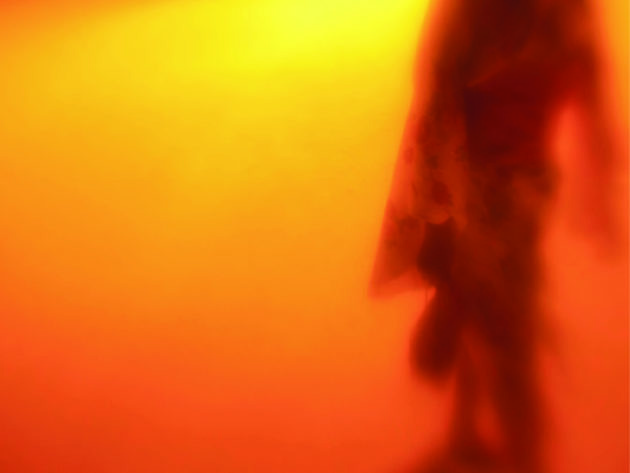
Naoyuki Ogino was born in Tokyo in 1975. Whilst studying Physics at university, he decided to leave his studies to pursue a career in documentary photography. He lived in Mexico for ten years, experiencing native Mexican culture, and has since traveled all over the world. He now resides in Kyoto and calls his ‘Geiko’ project, documenting geisha in the ancient capital, his lifework.
Ogino describes his work as “…documentary in the broadest sense. I am trying to omit fiction as much as I can in order to capture the very moment of non-fiction. I want to document …people, within their histories, societies, cultures, neighborhoods, atmospheres, environments or weather.”
This interview with Ogino from KJ 84 (December 2015) explores his exhibition featured in that year’s KYOTOGRAPHIE Festival, for which he was also the official photographer. ‘Offspring Spirits,’ a series of digital images depicting events at the Buddhist festival O-bon, was exhibited amongst the firing chambers of Fujihira noborigama (climbing kiln), one of several surviving today in the Gojo-zaka area of Kyoto. Since many of these ancient pottery kilns for Kiyomizu ware (Kiyomizu-yaki) have been demolished since World War II, this kiln is a significant cultural asset, as well as an apt place to show Ogino’s photographic perspective on one of Japan’s most intriguing traditions.
SARAH BROOK: Why did you choose to take photographs at Obon festival?
NAOYUKI OGINO: Obon is a summer festival during which Japanese people believe their ancestors’ spirits come to visit them. It’s very strange because many Japanese are Buddhist, and according to Buddhism, we are reincarnated. So technically their ancestors have already been reborn! During Obon, local people gather in a small space in the street or in a school playground. They play drums, sing, and dance to music with their ancestors. I took the Offspring Spirits series of photographs at a local elementary school in Kyoto. The images have a certain yellow tinge due to the lighting coming from the top of the school building. I didn’t change it; it’s just the color as it was when I photographed that day. The ‘realm of the dead’ was very interesting to me during this project. In Japanese we say ‘yominokuni’ (黄泉の国), and to write this, we use the character for ‘yellow’ (黄). Furthermore, when someone dies in Japan, we bring them to a crematorium and the body is burned. The body then enters the next world. I felt that in this climbing kiln, there was a similar process used for making ceramics as for cremating the dead. When the materials are fired and become a pot, they enter a kind of ‘other realm.’ Because of the element of fire during this process, the color yellow is present too. It was also very significant for me to have the exhibition at this kiln because the photographs were taken less than one kilometer from here. Obon is a festival that is related to people’s ancestors and their land. That land is here.
It seems the festival is quite important to you, personally.
Well, I lived in Mexico and was traveling abroad for a long time, so I didn’t have many opportunities to experience Obon. But even when growing up in Kanagawa, I didn’t have much of a connection to my roots or to the land there. My grandparents were still alive, though they were living in a different place, and my great-grandparents were already dead. I was in elementary school, and I never went to Obon in yukata, and I didn’t dance. I didn’t feel like I was participating at all. They were selling snacks so I bought and ate them, and watched the festival. But if you were born in that place and you are one of three or four generations, then maybe you want to dance at Obon because perhaps one of your ancestors will come to visit you. Still, it was a strange and emotional experience for me then to watch the festival. To be a photographer in that environment is a little easier though, because I can detach myself from the situation.
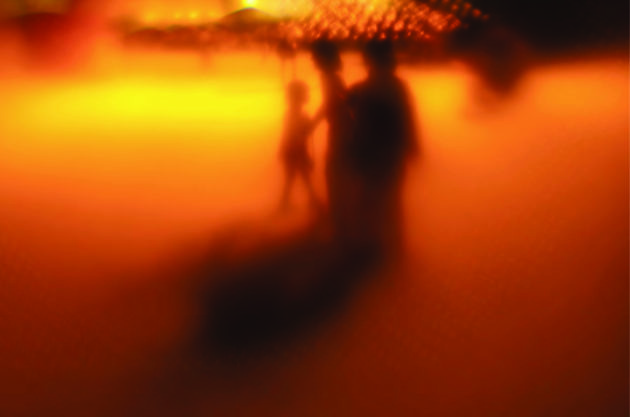
You can’t actually see people’s faces in the photographs. What kind of effect does that have on the images?
I think this effect is best explained through ‘yin and yang’. I’m really interested in the concept, especially the yin part. As a modern society, we have been really focusing on the yang part, and actually destroying the yin, that is, the things that are in darkness or in the area that cannot be seen. These are often seen as bad things, but darkness does not have bad connotations for me. I think it’s very important to have that balance. The things that cannot be seen are the most powerful. Nowadays, we make everything visible by using flash and too many lights, because we just want to see everything. Whatever method you use, you destroy that darkness. The reason I didn’t show the faces is that I wanted to keep the invisible parts invisible. It’s obvious that every human being has a face, but we don’t know what face they have in darkness. Maybe you have a different face in front of the mirror, or when you are taking a bath, or when you are sleeping, or when you are just sitting in darkness and thinking about something. Maybe you don’t want your ‘invisible’ face to be seen.
Is that connected to your statement about cameras being ‘too accurate’ these days?
Perhaps we have been affected by seeing everything filtered through modern, well-designed camera lenses. Our brain has learned that when we see something, we should see it in a certain way. Human beings are getting used to depictions of scenes under controlled aberration, and colors adjusted by industrial printing processes. Inside our brains we have a kind of function like Photoshop. This in-brain application changes what we see in an ‘educated’ way so, for example, we see white paper as white, whether under daylight or candlelight. Of course technically it’s not white under candlelight—because it is very warm light. But we see it as white because we ‘want’ to see white. I wanted to go outside of this ‘well-designed’ vision, so I used my hand-made lens and tried not to use auto-white balance to modify colors.
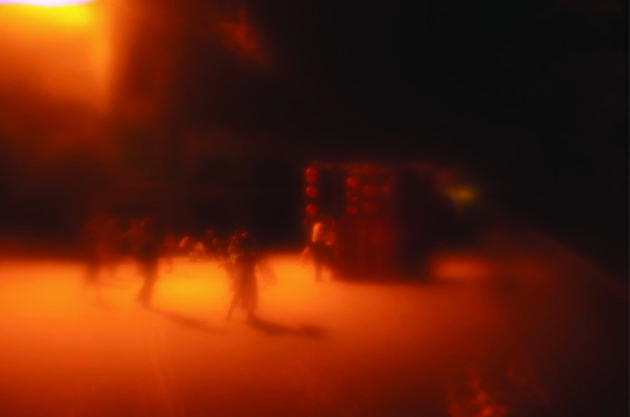
So these things start to influence what we naturally see. What kind of feedback do you get from your audience?
When I was showing my work to a photography expert a while ago, he looked at the first image, the second, and the third, and then he closed my portfolio. He said, “I have been working in the photography field for over 20 years and you want me to take out my eyes, wash them, and put them back in, to see these images?” I said, “Please, don’t do that!”
I think the reason that people respond like this is because they once had a similar way of seeing things, but it has become lost or is kept hidden away in some part of their brain. Usually, we don’t open that ‘window,’ because we only see what the well-designed camera lens gives us. Subconsciously we know that window was open before, maybe when we were children. Perhaps somebody who believes in reincarnation will say, “Oh in my past life, I saw through that window.” People can reach that ‘window’ through my photographs. It’s very difficult to take out my eyes or brain and wash them. But I can take out the well-designed complex lens and replace it with a simple one. I want to show more diversity and a sensibility for the darkness or areas that cannot be seen.
In your statement, you said that you wanted to re-open windows for yourself too.
Yes, because when I started to photograph this series through my hand-made lens, I already knew how it makes the scene different from a well-designed lens, so maybe it means that I had already opened a different window. Maybe it wasn’t a new window, just a small feature on an old window. I need to use tools to see things differently. Perhaps I will start trying to open new windows soon without tools, but I need to practice to reach that level!
So do you think that documenting things exposes something about you personally?
I think that my photography is a kind of interview. But it’s not an interview in terms of the dictionary definition. Morphologically, ‘interview’ combines ‘inter’ and ‘view.’ For me, ‘inter’ arises in-between me and the subject, and the ‘view’ projected on a kind of screen arises in-between me and the subject. So I see a screen in-between us, and I’m looking at the screen from my side. I know that they have their image, which is the opposite side of the same screen, but they might be seeing a totally different image on it. And the audience are not looking at this screen because they were not there and the image was already transferred to a photograph. So in that way it’s very personal, but it’s not just about me because I need somebody to be on the other side to have the screen appear. I cannot create my own screen without their existence.
You’ve been living in Kyoto for a while now. Do you think it influences your work?
As a Japanese photographer, I decided to mainly photograph Japanese things, although I have also taken photographs in Mexico, Europe and other Asian countries. If you go down any road deeply enough in Japan, it will always connect to Kyoto. In the past, the center of Japan was Kyo-to, the center of class was Kyoto, and the center of art was Kyoto. Whether I focus on dancing, kimonos, drawing or ideas, if I delve deeper, every road here in Japan goes to Kyoto. It’s very important for me to be here because it’s a kind confluence of cultures.
Do you have a favorite place in Kyoto?
The geisha district is my lifework, so it is a very important place for me. I’d like to continue taking photographs there for 40 or 50 years if they let me! I also like the center of Kyoto, because even after living here for eight years, I find new things all the time. Places that I didn’t know existed will appear and immediately become very important to me. It’s difficult to identify where exactly is my favorite because if I choose a favorite, I am saying so through my current context and situation. For me, the profile of Kyoto changes every minute.
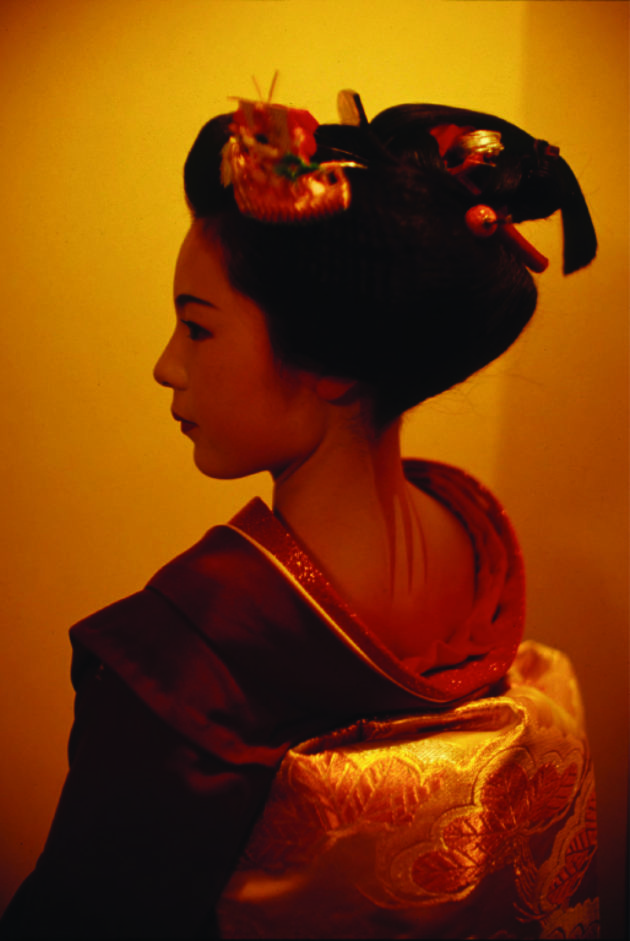
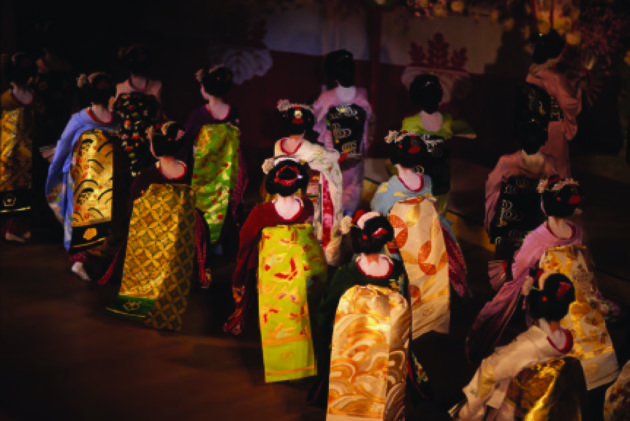
So you’ve experienced lots of different places. Do you think your work has changed over the years?
My work has been really influenced by my experience in Mexico. I lived there for 10 years and was speaking Spanish. I think the language really affected my thoughts. It also changed the way I saw lights and colors. When I did a photography exhibition of the geisha district a few years ago, a professional photographer came to my exhibition and said, “I understand you grew up under a culture with light coming through windows.” In Japan, for a long time, the space was surrounded by shoji and tatami. The day-light came through the shoji and it became softer. Then it reflected on the tatami and became even softer, and finally arrived at the tokonoma where we display decorations or paintings. In Mexico, the sunlight is very strong and shines directly through big windows into the rooms, so there are lots of shadows, and vivid colors are projected onto the wall. So perhaps the colors and lights in my work have become a kind of a Japanese and Mexican fusion.
Do you see any similarities between the Day of the Dead and Obon in Japan?
That’s a very difficult question. The ‘Dia de los Muertos’ mixes pre-Hispanic and Catholic culture. The pre-Hispanic part has more similarities to Japanese Obon. Aztec culture had a festival related to Mictecacihuatl (Lady of the Dead) in their ninth month (around July to August in the modern calendar), which is the same period as Obon, and I think they thought spirits were like an eternal thing.
How did you get into photography originally?
I have always been interested in photography, but initially I was just looking at photographs without actually taking any. When I left home, I had more freedom to make my own decisions. I remember one day I was sleeping and woke up suddenly. Normally I don’t remember my dreams, but on this Saturday morning, I remembered that I had been in a bar talking to someone. I was showing them a photograph and saying, “This is what I took.” Until that moment I thought photography was something I received from somebody. But I realized if other people were taking photographs, there was a possibility that I could take them too. So I went to a camera shop and bought a camera. I was studying Physics at university at the time, but it was too difficult so I found a good reason to escape.
Yes, it was a good decision! So what is next for you?
I’m working on many projects at the moment. I like to photograph ‘hanami’—cherry blossoms at night, where there are lanterns and crowds of people sitting in darkness during spring in Japan. I’ve been photographing these scenes for three or four years, but hanami is a temporary thing so I can only do it for one week a year. When I have enough images I will exhibit them. I’m also now photographing women, and the concept is skin. Recently, I was newly testing an old technique of printing photography and I made a print of a portrait I had taken, and the model’s skin was just so beautiful through this printing process. Then I started to focus on the skin. But I don’t want to just find a model and say, “Stand here and pose.” That would be boring. I want to find out a way to expose their skin, and I want to see exactly what skin is. Even if people see certain parts of your skin, they don’t see it as ‘naked’. There is a place between clothed and naked, and that is the zone I want to explore through this series. I will also continue my geisha district photography, and visit Mexico again. I go once every two years to interview the shamans, and also I want to see the ‘Day of the Dead’ festival again in Mexico. I visit shamans and listen to their rituals in South Korea or Indonesia too. There are many topics I am researching at the moment, but my work takes time. Sometimes a project will take ten years, so I just keep working on projects alongside each other.
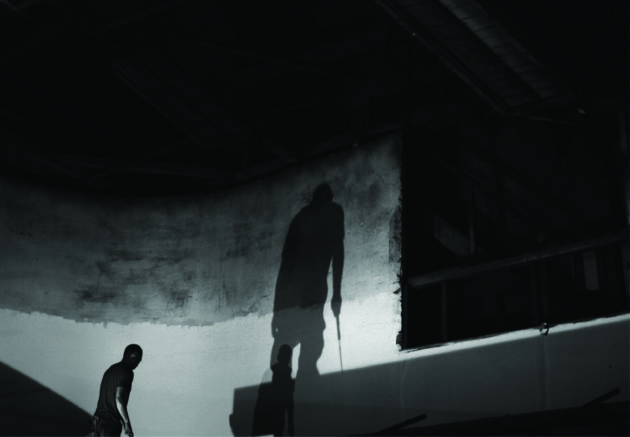
After your experiences, what advice would you give to other photographers?
I would say don’t rush, because if you are young, it’s very rare that you have already established your own philosophy or your own eyes. Everybody has their own philosophy, but we need time to identify its nature. It’s nobody’s but yours. The world thinks it needs to be in a hurry, so education is based on speed. Society wants people who are easy to handle. So you start to rush things, even if you didn’t intend to, and start moving towards the ‘yang’ part, even if you were looking for ‘yin.’ You use a flash, because you want to see ‘invisible’ things. You show it to people, and say, “Look, this is the invisible part!” But is it really still the invisible part? So from this point of view, my work is very fragile. Speed can be a very dangerous thing. If you’re young and want to become a photographer, it’s good to experience many things. The important thing is that you can’t learn the things that you want to see from anybody else. In the same way you listen to your body, asking, “What do you want to eat today?” you need to listen to your nature. If you don’t, you will be stuck in true darkness and lose the ability to realize the darkness. There are many lost people in the world. They like chaotic work, because they feel the same thing inside of them. If you want to be a part of that chaos, to be disconnected from your nature, and if you want to be surrounded by lost people, and you are happy with that, then you should do so. Become a refugee from yourself. But if you want to find your truth, you need to find your own unique place. Sometimes it’s not a very prestigious place, and you may have to arrive there alone. But once you find it, your life will be more peaceful.

SARAH BROOK lives in England, where she works as an English teacher. She is interested in black and white photography and film and previously lived in Kyoto.